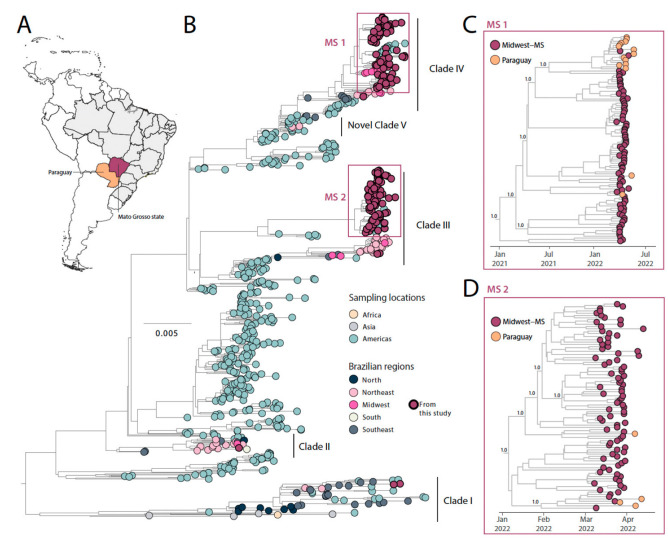Collaborators: Larissa Domingues Castilho de Arruda, Marta Giovanetti, Vagner Fonseca, Marina Castilhos Souza Umaki Zardin, Gislene Garcia de Castro Lichs, Silvia Asato, Ana Olivia Pascoto Esposito, Miriam Tokeshi Mülle, Joilson Xavier, Hegger Fritsch, Mauricio Lima, Carla de Oliveira, Elaine Vieira Santos, Livia de Mello Almeida Maziero, Danila Fernanda Rodrigues Frias, Danielle Ahad das Neves, Liliane Ferreira da Silva, Ellen Caroline Rodrigues Barretos, Paulo Eduardo Tsuha Oshiro, Bianca Modafari Goday, Jéssica Klener Lemos dos Santos, Simone Kashima, Carlos F C de Albuquerque, Rodrigo Fabiano do Carmo Said, Alexander Rosewell, Luiz Henrique Ferraz Demarchi, Julio Croda, Luiz Carlos Junior Alcantara, Crhistinne Cavalheiro Maymone Gonçalves
Summary: Since its discovery in early 1916, dengue fever, a common vector-borne illness in Brazil, has re-sulted in extensive urban outbreaks and poses a serious threat to the public’s health. Understand-ing the dynamics of Dengue Virus (DENV) serotypes circulating in different regions of Brazil is essential for implementing effective disease control and prevention measures. In response to this urgent need, we conducted an on-site training program in genomic surveillance in collaboration with the Central Laboratory of Health and the Secretary of Health of the Mato Grosso do Sul state. This initiative resulted in the generation of 177 DENV genome sequences collected between May 2021 and May 2022, a period during which over 11,391 dengue fever cases were reported in the state. Through this approach, we were able to identify the co-circulation of two different den-gue serotypes (DENV1 and DENV2) as well as the existence of diverse viral lineages within each genotype, suggesting that multiple introduction events of different viral strains occurred in the region. By integrating epidemiological data, our findings unveiled temporal fluctuations in the relative abundance of different serotypes throughout various epidemic seasons, highlighting the complex and changing dynamics of DENV transmission throughout time. These findings demon-strate the value of ongoing surveillance activities in tracking viral transmission patterns, moni-toring viral evolution, and informing public health actions.
Publication Date: 2023-08-17
Journal: Viruses
DOI: https://doi.org/10.3390/v15091790
Activity type: PaperClimade team: Brazil, Americas

